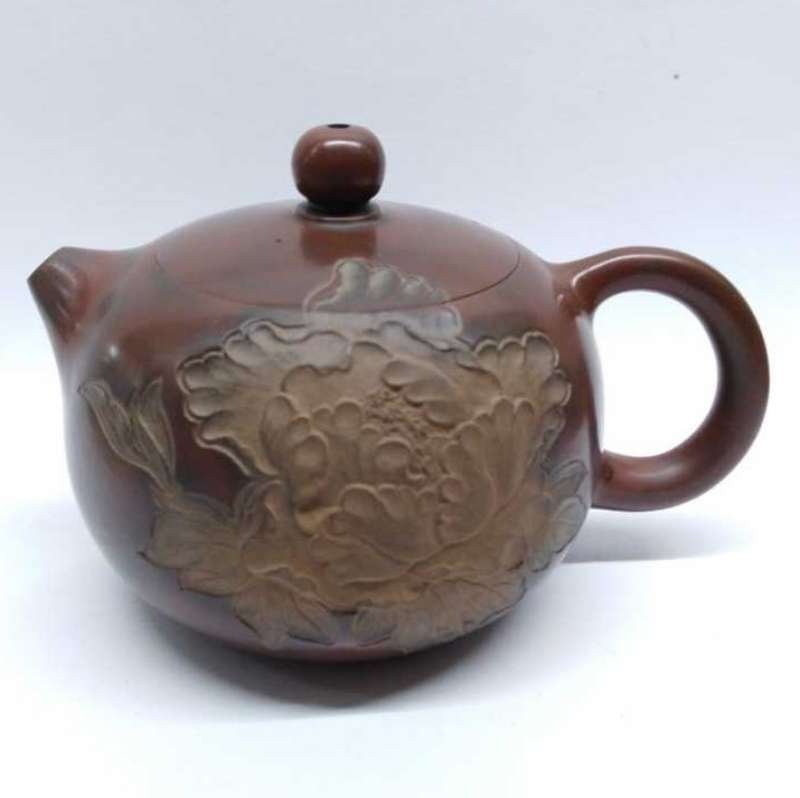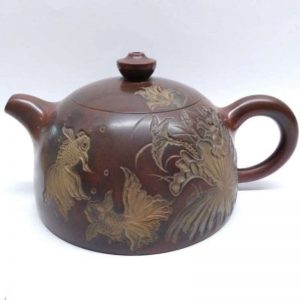
Nixing Clay
What is Nixing?
There are 4 type of famous clay that have been used for pottery in China for ages:
(1) SiChuan RongChang Clay;
(2) Yixing ZiSha Clay;
(3) Yunnan JiangShui Clay;
(4) Guangxi Qinzhou Nixing Clay;
Nixing tea ware is produced in the town of Qinzhou, in Guangxi province, China. The art form has an official history of 1300 years. Nixing tea ware had a major boom in popularity towards the end of the Qing Dynasty, during the Xianfeng period.
Nixing ceramics have a very special production process they use the mixture of clay from the East and West banks of the Qinjiang River in Qinzhou. The two clays are prepared differently and then mixed to create Nixing clay. Clay from the East bank of the river is stored wet in a sealed container before being mixed. Clay from the West bank of the river is left outside, exposed to the elements (under rain and sunshine) for 4 to 6 months. The exposed West bank clay becomes hard and weathered. The clay is then taken and crushed into powder and mixed with the wet East bank clay. The common ratio of mixture is 4 parts East-bank clay to 6 parts West-bank clay.
The clay is then shaped as teapot or pottery using wheel by hand. The artist may or may not add a carving to the outside of the piece. When the artist is finished shaping the piece it is fired at a high temperature of 1200 degrees Celsius.
The Nixing Difference
Nixing is known for six important defining features;
1) Nixing clay is a mixture of Qinzhou clay from both banks of the Qinjiang river prepared in the traditional way.
2) The clay is pure and neutral. No glazes.
3) After the clay is fired it will appear as different hues between copper brown and blue-grey. The result is unpredictable and uncontrollable. The artist will not know the final appearance of the piece until after it is fired. The examples below show some of the possible combinations of color, shade and patterns.
4) Because of its very fine and smooth surface, Nixing Clay is very well suitable for carving. Nixing Master Artists are well known in China for producing the most exquisitely fine and detailed carvings on Nixing tea ware.
5) Nixing is quite pliable, can be manipulated into a wide variety of shapes. As a result Nixing has been used by artists to make sculptures and other works of art beside tea ware.
6) Nixing Clay pores are smaller than the pores of most Zesha, such as Zini and Duanni, but unlike these kinds of Zesha which tend to trap air and heat within the pores, Nixing allows circulation, and does not trap heat as much as zini and duanni teapots do. Nixing is therefore a better clay to use for more delicate teas. It is therefore closer in character to Zhuni and can be used for all varieties of tea.
-
NXCTP07 Nixing Clay Teapot – 120 cc
RM 260.00Teapot weight: 176g, Packaging: 300g, Gross weight: 476g
-
NXCTP08 Nixing Clay Teapot – 120 cc
RM 290.00Teapot weight: 196.4g, Packaging: 300g, Gross weight: 496.4g
-
NXCTP09 Nixing Clay Teapot – 150 cc
RM 260.00Teapot weight: 151g, Packaging: 300g, Gross weight: 451g
-
NXCTP06 Nixing Clay Teapot – 150 cc
RM 320.00Teapot weight: 237.1g, Packaging: 350g, Gross weight: 587.1g
-
NXCRTP05 Nixing Clay Teapot – 130 cc
RM 260.00Teapot weight: 142.3g, Packaging: 300g, Gross weight: 442.3g
-
NXCTP004 Guangxi Teapot Nixing Clay-200 cc
RM 570.00Teapot weight: 278.8g, Packaging: 350g, Gross weight: 628.8g
-
NXCTP003 Guangxi Teapot Nixing Clay-200 cc
RM 570.00Teapot weight: 253.1g, Packaging: 300g, Gross weight: 553.1g
-
NXCTP002 Guangxi Teapot Nixing Clay-160 cc
RM 280.00Teapot weight: 220.8g, Packaging: 300g, Gross weight: 520.8g
-
NXCTP001 Guangxi Teapot Nixing Clay-220 cc
RM 420.00Teapot weight: 186.5g, Packaging: 300g, Gross weight: 486.5g












